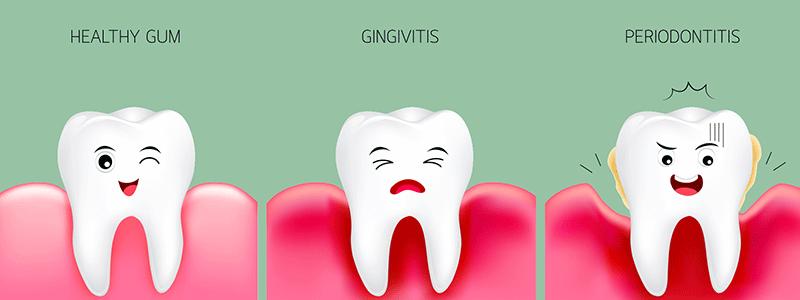Overview
What does periodontics treatment in children mean?
Periodontics (peri·odon·tics) is the treatment of gum diseases, or periodontal disease. Many people with periodontal disease do not seek treatment and their disease worsens.
Types
What are the different types of periodontal disease?
Gingivitis - The most common type of periodontal disease in children is gingivitis. Gingiva is the term used to describe the flesh of the gums, and a sign of gingivitis is bleeding or swelling of the gums. If gingivitis is not treated, it can become worse and cause your child or adolescent to lose teeth or lead to serious illness, such as heart disease.
Aggressive periodontitis - Adolescents might have gingivitis or a type of periodontal disease called aggressive periodontitis. Even though your teen is healthy and may have very little plaque around the first molars or incisors, the bone supporting these teeth might begin to weaken or disappear. Some teens have periodontitis that starts when they reach puberty and affects the gums around most or all of their teeth. Their gums swell and plaque forms on the teeth, loosening their permanent teeth.

Signs and Symptoms
Your child’s teeth and gums
Your child has several types of teeth, which emerge at different ages along the inside of the jaws. The first set of teeth, or primary teeth, begin forming before your baby is born and emerge soon after. These 20 teeth start to fall out about the time your child turns 6 to make room for 32 permanent teeth.
Each tooth is rooted in the gums. The gums and bones support the teeth, and can become diseased. This is called periodontal disease. Some children are more at risk for gum disease because of inherited disorders or chronic illnesses such as juvenile diabetes.
Treatment
How is periodontics in children treated?
Your dentist will do everything possible to help you prevent gum disease in your child. If your child has periodontal disease, your dentist will discuss the benefits and risks of treatments based on your child’s age, overall health and dental health.
Periodontal treatment may include:
Nonsurgical treatment, such as scaling and root planning, which remove plaque and tartar from deep surfaces.
Gum graft surgery, which reduces receding gums and helps ease sensitivity.
Laser therapy as an alternative to surgery.
Regenerative procedures to reverse bone and tissue loss.
Crown lengthening to remove extra bone and gum tissue.
Dental implants to replace lost teeth.
Periodontal pocket reduction procedures to reduce the areas where food and bacteria can hide around teeth.
Plastic surgery procedures to improve appearance.
Prevention
Parents can help their children and teens prevent periodontal disease by making sure they follow good dental habits, such as brushing and flossing regularly and watching what they eat. Teens who are undergoing puberty are at more risk for gum disease because of high hormone levels that change blood flow to the gums.
Parents should make sure their children continue to see their dentists for routine visits and watch for signs of gum disease, such as redness, bleeding, swelling or receding of gums. When a gum recedes, you can see much more of the lower portion of the tooth, sometimes down to the root.